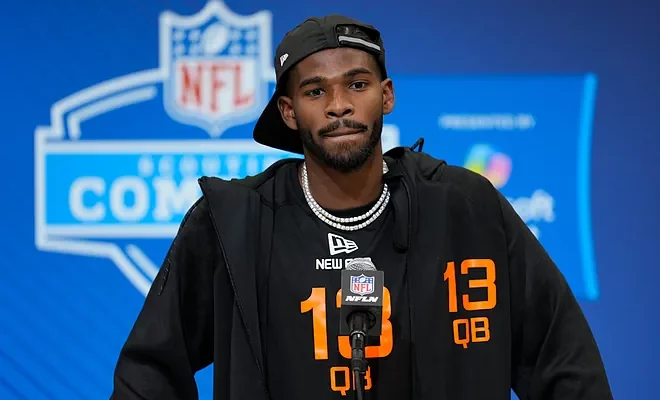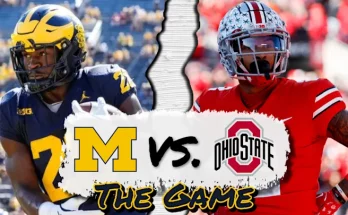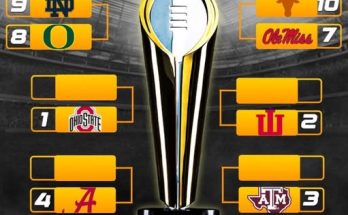Antonio Brown, one of the most controversial and outspoken figures in recent NFL history, has once again found himself at the center of a heated dispute, this time involving the Cleveland Browns and their owner Jimmy Haslam. The drama revolves around the Browns’ decision to draft Shedeur Sanders, the talented young quarterback who has been widely regarded as one of the most promising prospects in the 2025 NFL Draft. Brown has publicly accused Haslam of breaking a prior agreement not to select Sanders, raising questions about the integrity of the Browns’ front office and the dynamics between players, management, and ownership.
Antonio Brown’s NFL journey has been anything but conventional. Known for his electrifying talent on the field and his tumultuous behavior off it, Brown has navigated multiple team changes, suspensions, and controversies over the years. Despite this, his voice still carries weight, and when he speaks out, it draws significant attention. Brown’s recent claims about the Browns’ draft strategy have ignited a firestorm of debate among fans, analysts, and insiders.
The crux of Brown’s accusation lies in an alleged agreement between himself and Browns owner Jimmy Haslam that the team would not draft Shedeur Sanders. According to Brown, this understanding was reached after discussions where Haslam reportedly assured him that Sanders would not be selected by Cleveland, potentially out of respect for Brown’s influence or preferences within the organization. Brown has insinuated that this was a part of a broader plan to keep the Browns’ quarterback situation stable, perhaps to safeguard his own position or to prevent internal conflicts. However, the Browns defied this supposed agreement and chose Sanders in the draft, a move that Brown says breaks the trust and professional courtesy he believed was established.
The selection of Shedeur Sanders by the Browns was met with excitement and some skepticism. Sanders, the son of Hall of Fame quarterback Deion Sanders, emerged as a top quarterback prospect due to his impressive college performances, his arm talent, and his leadership qualities on the field. His entry into the NFL was widely anticipated, with many projecting him as a future franchise quarterback. Cleveland’s decision to draft Sanders signals their intention to build around youth and potential, possibly looking beyond their current quarterback depth chart. From a purely football perspective, selecting Sanders was a calculated move to strengthen the Browns’ offense for years to come.
Brown’s public criticism, however, has overshadowed the football narrative. His allegations paint a picture of discord behind the scenes, suggesting that the Browns’ decision was not just a football decision but one that violated informal promises or understandings. This scenario, if true, would reflect poorly on Jimmy Haslam and the Browns’ front office. It raises questions about the professionalism and transparency of management decisions and whether player influence is being respected—or undermined—in the process.
Historically, player involvement in team decision-making, especially in drafting, is unusual but not unheard of. Veteran players, particularly those with star status or significant leverage, sometimes try to sway team personnel decisions to protect their interests or to support players they want as teammates. Antonio Brown’s reputation as a player who is willing to confront management makes his claims plausible to some. Still, it is essential to consider the context and motivations behind such accusations. Brown has been known to express grievances publicly in moments of frustration or when seeking to assert influence.
The Browns organization has responded cautiously to the accusations. While not denying the draft pick itself, representatives from the team have dismissed the notion of any formal or informal agreement regarding Sanders’ selection. They emphasize that draft decisions are ultimately made by the front office and coaching staff based on talent evaluations and team needs. From their perspective, drafting Sanders was a straightforward football decision aimed at securing the best possible future for the franchise. The team has also highlighted the importance of maintaining focus on performance and cohesion, downplaying the impact of Brown’s comments as a distraction.
Analysts and fans have been divided in their reactions. Some see Brown’s claims as an extension of his contentious personality, interpreting his comments as an attempt to disrupt the Browns’ plans or to assert his relevance in a team increasingly focused on a new era. Others sympathize with Brown, suggesting that veteran players often have valuable insights and that breaking informal agreements could undermine trust within the locker room. The issue also raises larger questions about the power dynamics in professional sports teams—how much influence players should wield in personnel decisions, and how owners and executives balance transparency with strategic secrecy.
The situation with Shedeur Sanders and Antonio Brown also fits into a broader narrative about the Browns’ organizational challenges. Cleveland has long been a franchise struggling with stability, both on and off the field. Coaching changes, front office shakeups, and player controversies have been common themes. Draft decisions, especially those involving high-profile prospects like Sanders, are scrutinized intensely. Brown’s accusations add another layer to this complexity, suggesting that internal communications may be flawed and that trust between key stakeholders might be fragile.
For Shedeur Sanders himself, the controversy could be a double-edged sword. On one hand, being drafted by a storied franchise like the Browns presents an incredible opportunity to prove himself at the highest level. On the other, the backdrop of internal disputes could create additional pressure and distractions as he begins his professional career. How Sanders navigates these challenges could shape perceptions of his rookie season and beyond. His performance on the field will likely determine whether the Browns’ gamble on him pays off and whether he can unite the team amid ongoing turbulence.
The dynamics between Antonio Brown and the Browns could evolve in several ways. If Brown remains with the team, the relationship between him, the coaching staff, and ownership will be critical to monitor. Will the allegations lead to a deeper rift, or can they be resolved behind closed doors? Alternatively, the controversy might accelerate Brown’s exit from the franchise if tensions rise. Either outcome will have significant ramifications for the Browns’ roster construction and locker room atmosphere.
Jimmy Haslam’s role as owner is also under the spotlight. Owners in professional sports often maintain a degree of separation from day-to-day football operations, entrusting general managers and coaches to make personnel decisions. However, Haslam’s alleged involvement in an informal agreement with Brown suggests a more hands-on approach, at least in terms of player relations. If true, this involvement complicates the traditional owner-player dynamic and could invite criticism about mixing ownership prerogatives with personal promises that might conflict with team strategy.
Moreover, the Browns’ handling of this situation could influence how other teams manage similar issues in the future. Transparency, communication, and clear boundaries between player input and executive decisions are crucial to maintaining organizational integrity. The fallout from Brown’s accusations might encourage NFL teams to formalize processes for player feedback while reinforcing the ultimate authority of front offices to execute draft and roster decisions.
In the broader NFL landscape, the incident reflects the increasingly complex interactions between players and team management. The rise of social media and player empowerment has made it more common for athletes to voice opinions publicly, sometimes bypassing traditional channels. While this can enhance transparency and player agency, it also risks undermining internal cohesion if grievances are aired in a confrontational manner. The Browns case illustrates both the potential and pitfalls of this evolving relationship.
Looking ahead, the Browns face the challenge of integrating Shedeur Sanders into their team while managing the discord stirred by Brown’s allegations. Balancing respect for veteran players with the need to develop young talent is a delicate task. Success on the field will require unity and focus, something that could be compromised if internal disputes persist. The front office and coaching staff must navigate this landscape carefully to avoid distractions that could derail the team’s progress.



